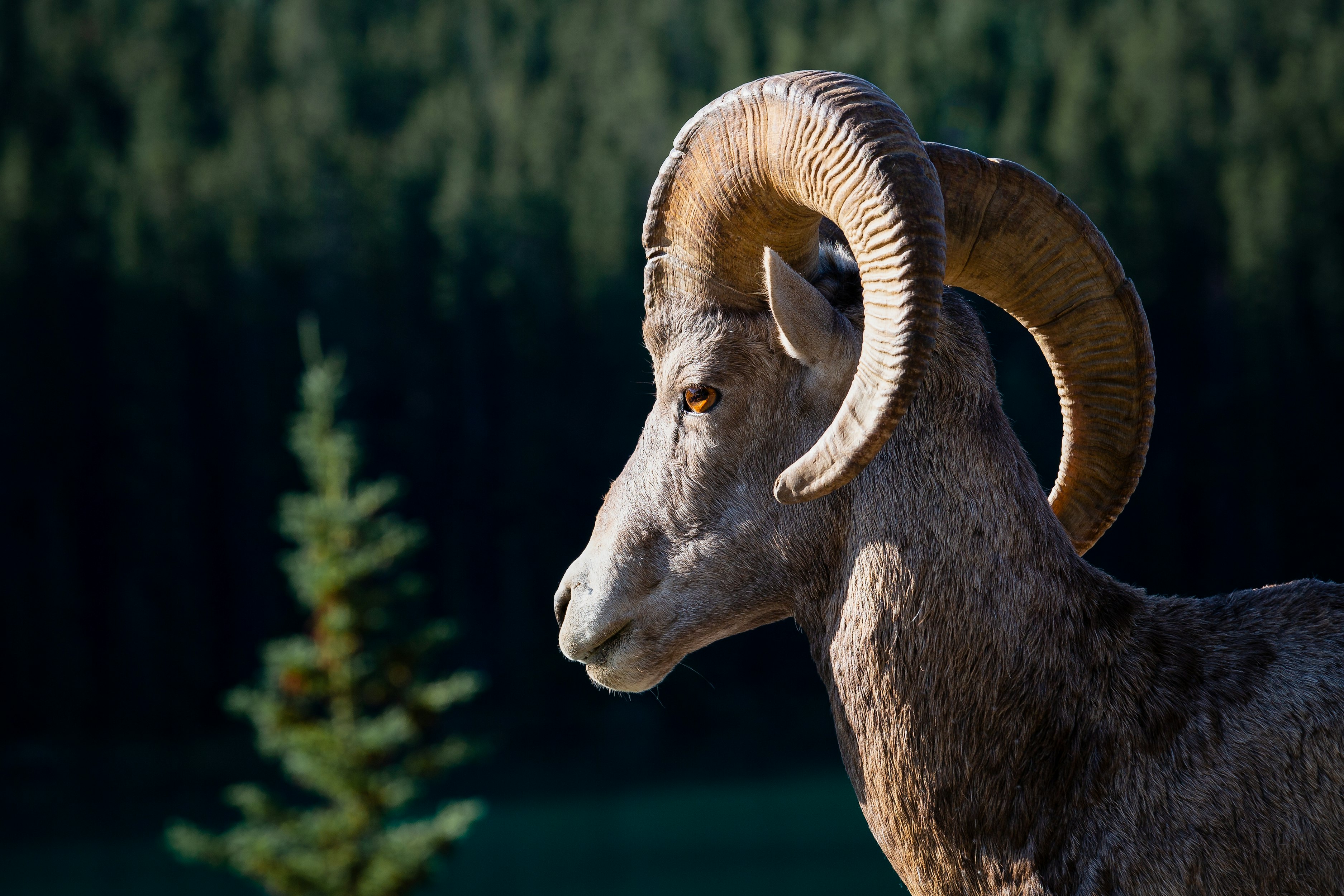The Feral Pig "Problem" Part V
The Feral Pig Problem – Part V: Sources and Comments
In addition to the specific links included in each installment, which I have not repeated, I have included a list of books below and remarked on what I found important about them. Across the board, they have informed my thinking on these topics.
 Holistic Management: a New Framework for Decision-Making by Allan Savory with Jody Butterfield
Holistic Management: a New Framework for Decision-Making by Allan Savory with Jody Butterfield
In my opinion, this is the foundational book on animal adaptations and how these adaptations connect animals to their habitats. While the book was intended to illustrate methods of better decision making, such as treating social relationships and environmental conditions as integral to long-term economic outcomes, it is full of revolutionary insights into how ecological systems function and interact. Everything in this book is common sense, but it organizes accepted truisms in a manner that leads to completely new conclusions, including revolutionary, but practical advice on how to better manage animals and habitats.
 Invasion Biology: Critique of a Pseudoscience by David I. Theodoropoulos
Invasion Biology: Critique of a Pseudoscience by David I. Theodoropoulos
This, in my opinion, is one of the most important of all books on wildlife and habitat management. It is a devastating expose of the radical environmentalism that has been sold to a gullible world by the agribusiness giants and their cronies in government, agencies, and academia. It utterly discredits much of what is taken for granted by life and habitat “managers,” including assumptions that underlie wildlife and plant or eradications in general, including those of pigs. I was shocked by the historical origins of these beliefs. Clear-eyed common sense and uncompromising skepticism. Everyone should read it.
 1491: New Revelations of the Americas Before Columbus by Charles C. Mann
1491: New Revelations of the Americas Before Columbus by Charles C. Mann
Before humans wiped them out, there were many pig-like creatures in the New World. This book begins by discussing the devastating damage done to the New World by aboriginal humans 12,000 years ago.
Its facts contradict the modern idea that today’s empty habitats or even those of pre-European times reflect a natural state, upending the foundation of our attitudes about wild animals, especially “exotics,” including pigs.
“If time travelers today were to visit North America in the late Pleistocene, they would see in the forests and plains an impossible bestiary of lumbering mastodon, armored rhinos, great dire wolves, saber tooth cats, and ten foot long glyptodonts like enormous armadillos. Beavers the size of armchairs; turtles that weighed almost as much as cars; sloths able to reach tree branches twenty feet high; huge, flightless, predatory birds like rapacious ostriches – the tally of Pleistocene monsters is long and alluring. …All these species vanished (with the arrival of humans)… leaving the Americas a zoologically impoverished world…”
Missing in this description, to name but a few, are camels, horses and peccaries larger than wild boar. Virtually every “exotic” animal, which we, in our arrogant ignorance so diligently strive to eradicate, had an analog species except one: humans, the one true invader.
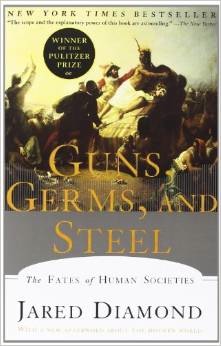 Guns, Germs, and Steel: the Fates of Human Societies by Jared Diamond
Guns, Germs, and Steel: the Fates of Human Societies by Jared Diamond
This best-selling book explains why some human societies have prevailed while others failed. The role of disease, in particular, is explored. Diseases, as the biggest killers of people, have decisively shaped history. Most people do not realize that human epidemic diseases originated in livestock. This discussion should give insight and pause to those who think we have conquered nature and can safely pursue confinement factory production of our milk, meat, fish and fowl.
 The Meat Racket by Christopher Leonard
The Meat Racket by Christopher Leonard
This book explores the history of Tyson Foods’ domination of the poultry and pork segments of the food industry. Leonard shows how a few companies led by Tyson came to control our meat industry, and the enormous costs our society now bears. First, it is a disaster for the animals. Next, it endangers human health, because of the filthy conditions of the meat factories and their overuse of antibiotics, which now permeate our food. And third, it is destroying rural America. Defended as “free enterprise” by Big Food and its cronies, only the profits from the system that are privatized to shareholders, whereas the costs to public health, the environment and rural society are socialized.
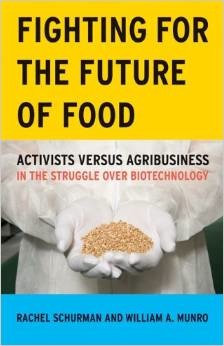 Fighting for the Future of Food: Activists Versus Agribusiness in the Struggle Over Biotechnology by Rachel Schurman and William A. Munro
Fighting for the Future of Food: Activists Versus Agribusiness in the Struggle Over Biotechnology by Rachel Schurman and William A. Munro
Well-worth reading, this meticulously referenced work, published by the University of Minnesota is Big Food’s version of the truth about GMOs. According to the authors, genetic modification of seeds and crops would have “… been accepted as the obvious solution to global hunger, rising food prices, and low agricultural productivity in poor countries…” except for the brilliant agitations of a small, well-organized group of social activists. Furthermore, “…biotech crops also spoke to US farmers’ welcoming attitudes toward science and technology.”
The reality is that GMO crops have been modified to withstand powerful poisons which are then used on all croplands to suppress weeds, and are intended to kill all plants except the crop being grown. They also kill soil life and have long residuals in surface and subsurface water. Imagine that worldwide every acre being used for grain and fiber production will be subjected to these poisons. Because weeds have become resistant to Roundup, we are now going back to 2,4-D,one of the most powerful herbicides ever invented. It has been avoided ever since the Vietnam War when it was used in Agent Orange with terrible after-effects on exposed civilians and American veterans.
There is not one reference in this book to what is really being done with GMO crops. This work is published by one of the nation’s leading land grant universities with the full support of its Board of Regents. In my opinion, these omissions illustrate the extent to which the universities have become co-opted by the agribusiness giants.
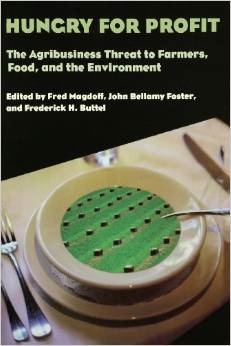 Hungry for Profit: the Agribusiness Threat to Farmers, Food, and the Environment edited by Fred Magdoffs, John Bellamy Foster, and Frederick H. Buttel
Hungry for Profit: the Agribusiness Threat to Farmers, Food, and the Environment edited by Fred Magdoffs, John Bellamy Foster, and Frederick H. Buttel
This is a compendium of 13 articles highlighting the issues of and the debates about the global commodification of agriculture. Food safety, GMOs, environmental, social and economic issues are explored. A partial list of the topics includes: transnational corporations and their promotion of agrochemical sales and agribusiness imperialism, the dispossession of Third World farming masses, forced urban displacement, unemployment, poverty, starvation in the midst of plenty, low wages, pesticide dangers, deplorable living and working conditions..
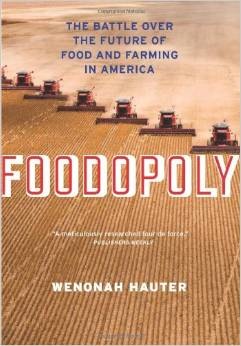 Foodopoly: The Battle Over the Future of Food and Farming in America by Wenonah Hauter
Foodopoly: The Battle Over the Future of Food and Farming in America by Wenonah Hauter
An excellent analysis of the today’s concentrated food production system including its universal reliance on subsidies, its negative effect on rural communities resulting from the destruction of midsize farms; the abandonment of antitrust and the accelerating monopolization this has caused; the putrid condition of many animals processed through abattoirs; startling descriptions of the USDA’s dismantling of inspections and how lack of enforcement of food standards has spread Mad Cow Disease. I draw heavily on this author for my section “Hogging the Profits,” and “Modern-Day Serfs.”
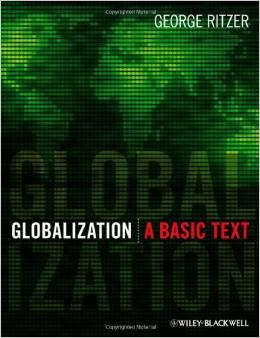 Globalization: A Basic Text by George Ritzer
Globalization: A Basic Text by George Ritzer
What is globalization? What are its economic drivers? This useful book discusses the economy, culture, technology, benefits, inequalities, political theories, potentials and dangers of globalization.
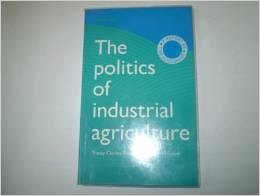 The Politics of Industrial Agriculture by Tracey Clunies-Ross and Nicholas Hildyard
The Politics of Industrial Agriculture by Tracey Clunies-Ross and Nicholas Hildyard
This book was published in 1992 and offers a prescient look at the trends that have continued and accelerated in the 25 years since.
“The industrialization of food production, processing and marketing within fewer and fewer corporations is a continuing process that has not yet run its course. It is important to recognize the nature of this process when considering the question of sustainability of food production technology and practice.”
” The trend towards increasingly intense agriculture is creating dependency where there was independence, driving farmers into a spiral of increasing debt, concentrating landholdings, undermining choice, increasing the vulnerability of farmers, disempowering smaller producers and consumers and shifting power to large farmers and corporations.”
From “Chemical Treadmills”consider this prediction: “The farmer will become totally dependent on the agrochemical companies.”
And this one: “ …In particular, industry holds out the promise of a reduction in the use of chemicals through pest-resistant crops and crops that are able to fix their own nitrogen. In fact, despite the claims of the industry, biotechnology is likely to lead agriculture further down the road of chemical dependency. It would be surprising if this were not the case. Corporations that have an interest in fertilizers and pesticides have moved into the seed industry, and now see genetic engineering as a logical extension of their business. Predictably, much of the work on crops involves making them more rather than less dependent on the use of chemicals. Thus, at a time when fertilizer use is causing environmental damage on a significant scale, research is being carried out into ways of making crops capable of absorbing greater quantities of synthetic fertilizers, and therefore, presumably, less able to function without them.
On the herbicide front, developments are even more worrying: 79 corporate/state research programs are developing more than 23 herbicide tolerant crop lines including cotton, maize, corn, potato, rice, sorghum, soybean, we, tomato, alfalfa and sugarcane.”
Saying, after 25 years , these dire predictions have more than come true, is an understatement!
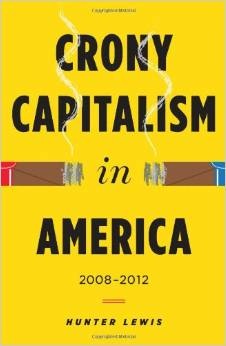 Crony Capitalism in America: 2008-2012 by Hunter Lewis
Crony Capitalism in America: 2008-2012 by Hunter Lewis
Crony capitalism is a form of central planning.
“Many people regard Wall Street as the epicenter of American capitalism. In reality it is the epicenter of American crony capitalism. Where Wall Street stops and Washington begins is impossible to say. This situation was not caused, as many suppose, by the Crash of 2008. Rather the longstanding Wall Street–Washington partnership, caused the Crash. But the problem extends far beyond Wall Street to every corner of America.
If we are going to do anything about our present economic problems, and also give the poor a chance at a better life, we will need to eliminate crony capitalism.”
This book will help you understand how the insanity of our pig production system came to pass and why it will be so hard to do the common sense things necessary to fix it.
 The Road to Serfdom: A Classic Warning Against the Dangers to Freedom Inherent in Social Planning by F. A. Hayek (Nobel Prize for economics, 1974)
The Road to Serfdom: A Classic Warning Against the Dangers to Freedom Inherent in Social Planning by F. A. Hayek (Nobel Prize for economics, 1974)
This is one of the most respected books ever written on the subject of economic freedom. It is a warning against concentration of economic power in any hands. Mark Twain quipped that “A ‘classic’ is a book that everyone admires and no one reads.” Maybe that explains why so many self-proclaimed economic “conservatives” seem to have ‘missed the (Hayek) memo’.
Hayek who had fled the Nazis was in England at the time, writing as World War II was ending. He told the anti-Nazi, moderate British socialists that there was no fundamental difference between them and the German National Socialists, or for that matter, the communists! This was not well accepted to say the least and 30 years had to pass before it was intellectually acceptable to criticize central planned economic practices, even in the U.S. In an example of the operation of the Law of Unintended Consequences, the discrediting of central planning led to the relaxation of anti-trust enforcement. This unleashed the rise of the monopolies and created crony capitalism, which is central planning by the business giants and their allies in government and academia.
“… The essential point is that the discretion left to the executive organs wielding coercive power should be reduced as much as it is possible.”
“The most serious development is the growth of arbitrary administrative coercion and the progressive destruction of British liberty, the Rule of Law…”
“Under the Rule of Law the government is prevented from stultifying individual efforts by ad hoc action. Economic planning of the collective necessarily involves the very opposite.”
“Power tends to corrupt, and absolute power corrupts absolutely.” – Hayek quoting Lord Acton.
“What to us appear the worst features of totalitarian systems are not accidental byproducts but phenomena which totalitarianism is certain sooner or later to produce.”
“If capitalism means a competitive system based on free disposal over private property it is far more important to realize that only within this system is democracy possible.”

